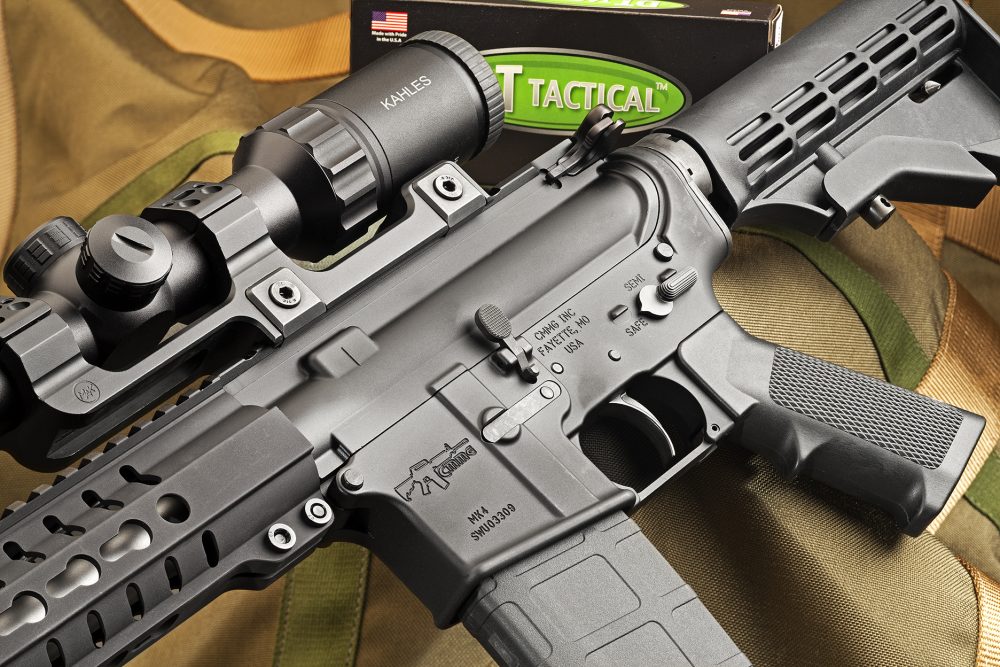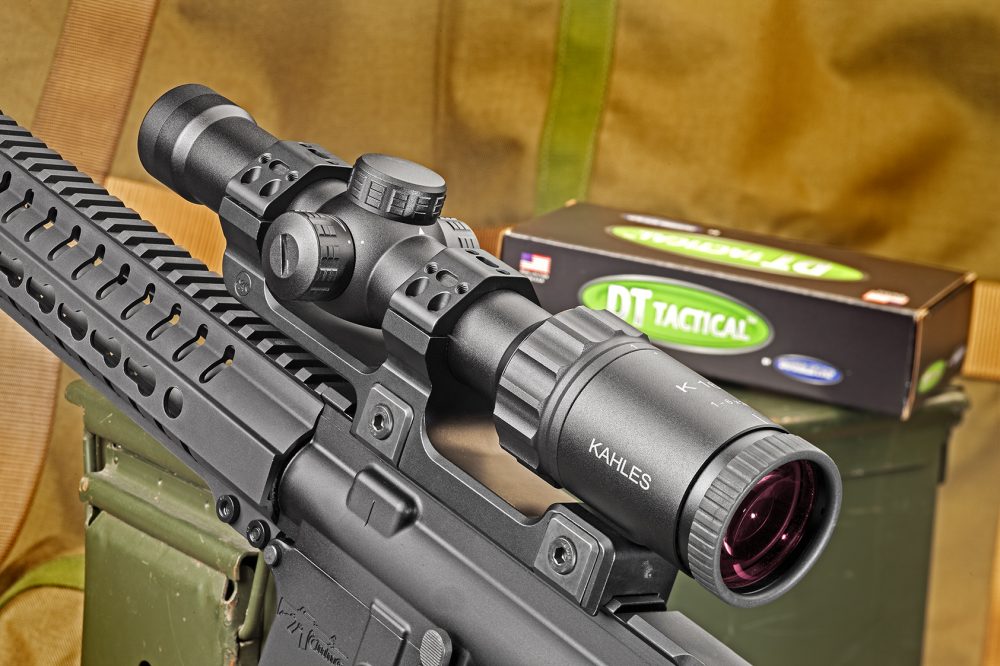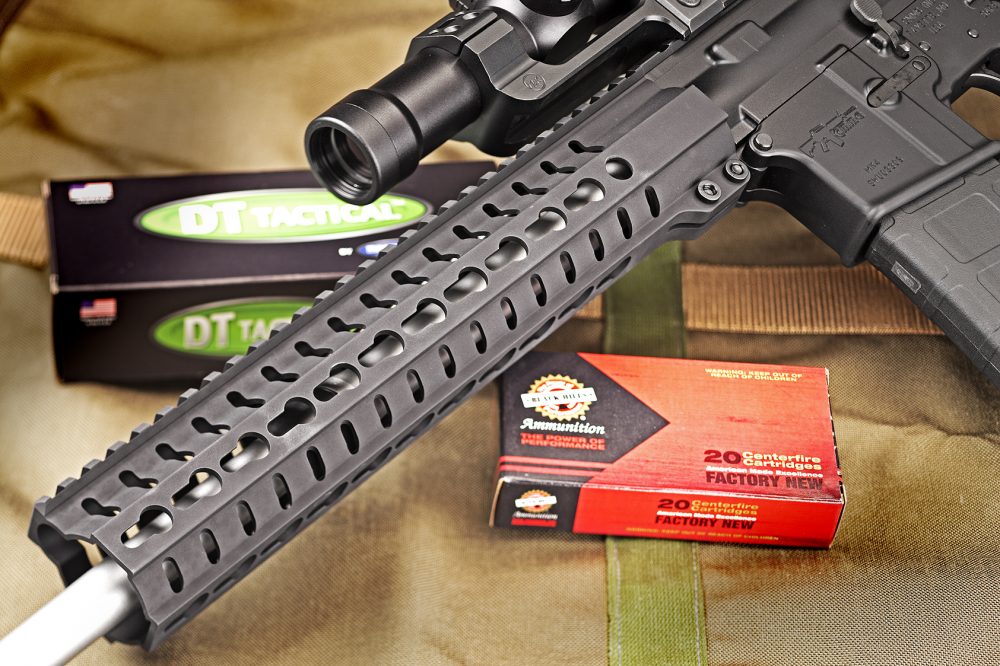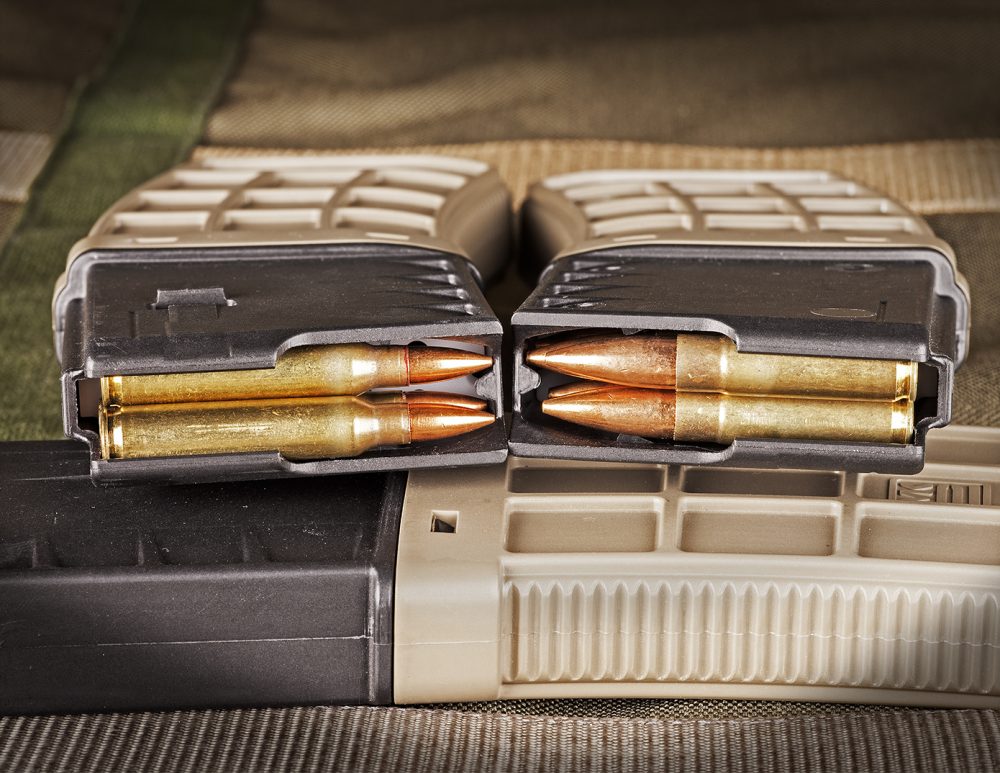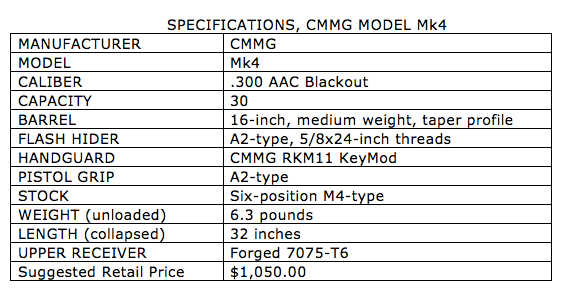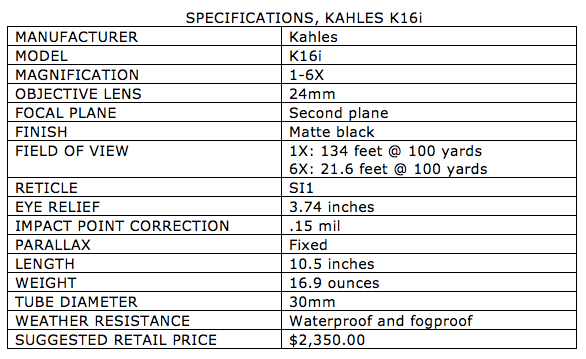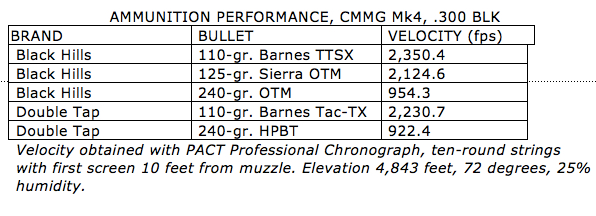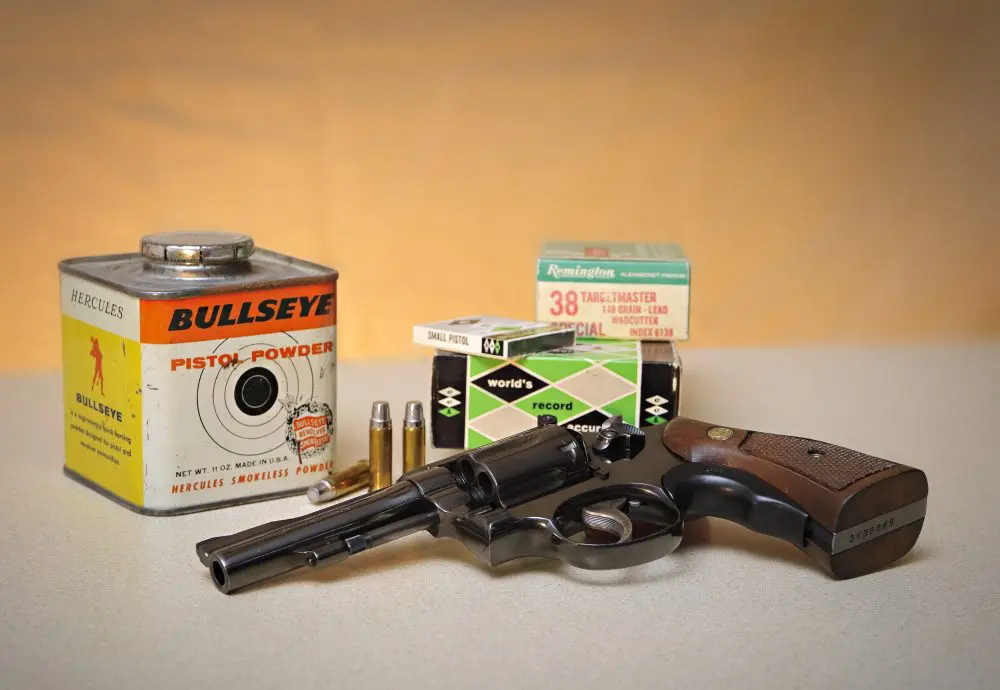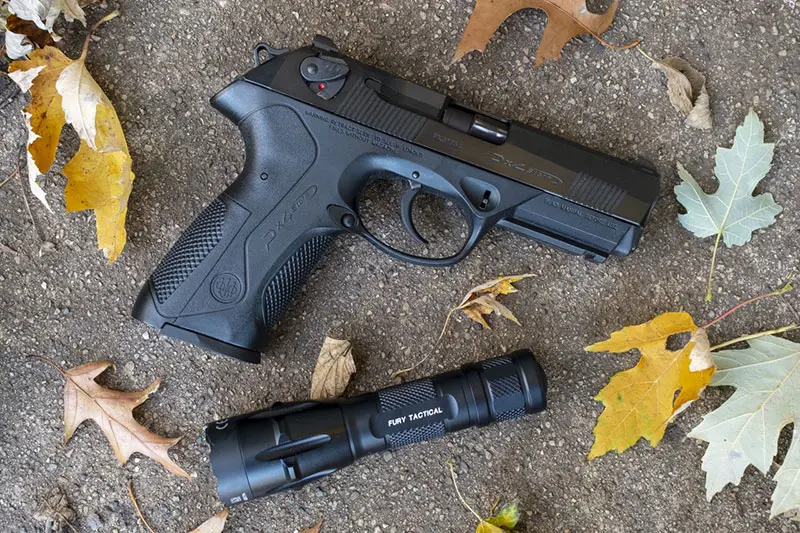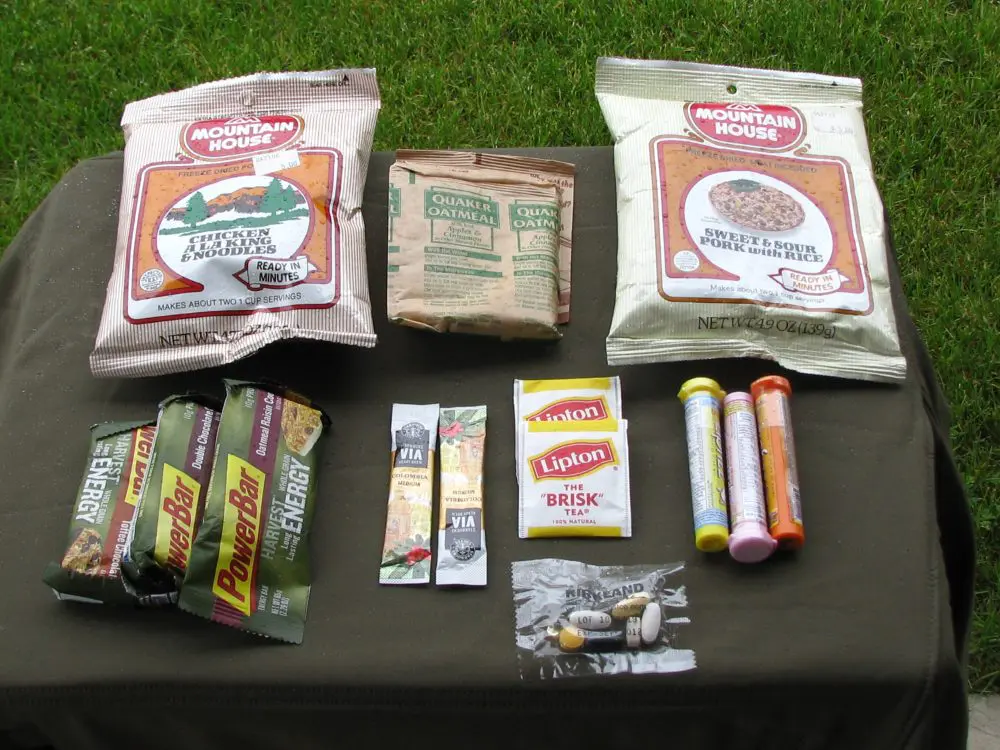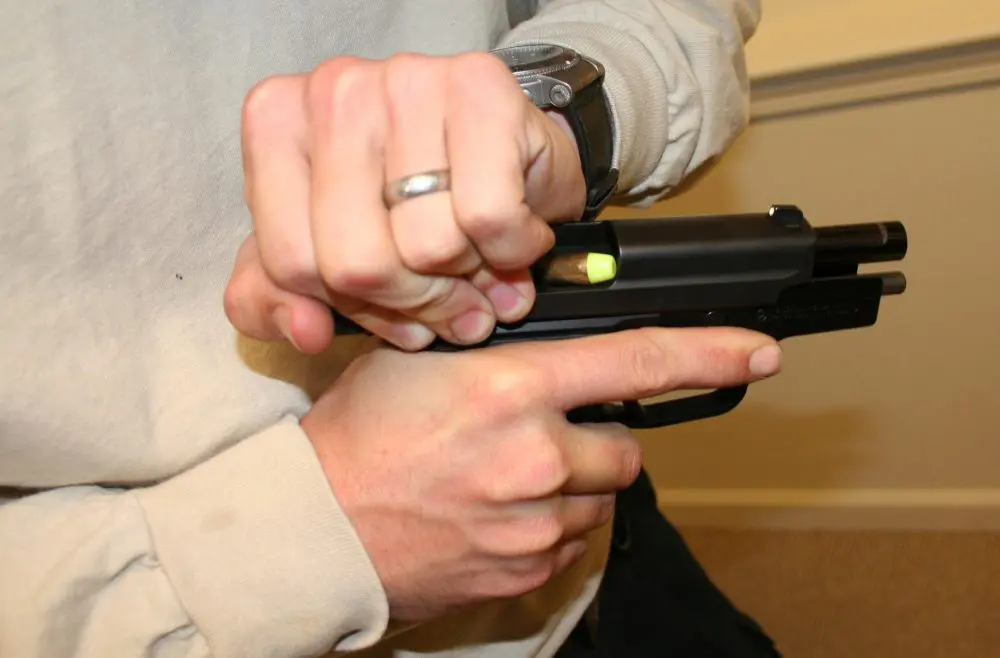In the last few years, the .300 AAC Blackout cartridge—also known simply as .300 BLK or 7.62×35mm—has become very popular, both in AR-type rifles as well as some bolt-action offerings. This is significant since the Sporting Arms and Ammunition Manufacturers’ Institute (SAMMI) only approved the .300 BLK in 2011.
In much the same way as the 9mm vs .45 debate has been going on for years, some say the 5.56×45/.223 is better than the .300 BLK, while others claim the .300 BLK is more powerful and versatile than its smaller sibling.
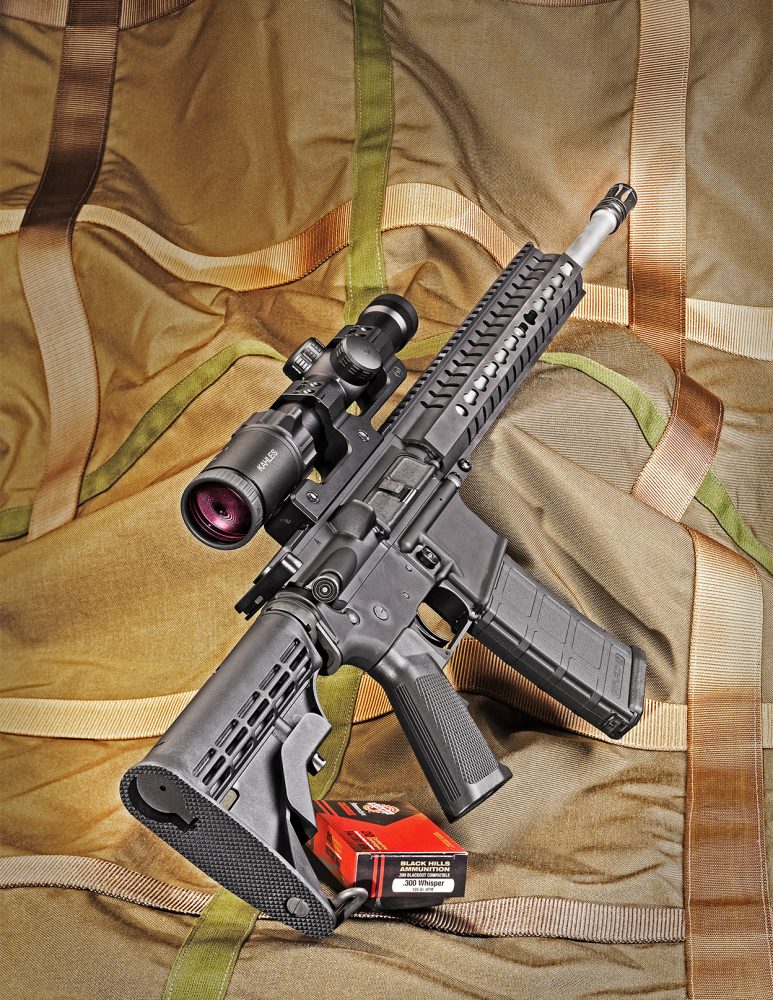
The truth is that, like pistol calibers, each has its strong and weak points. There is truly no better or worse—you like apples and I like oranges; you like Dodge trucks and I prefer Fords.
A true advantage of the .300 BLK is that by using heavier bullets, the round is subsonic. This has made it very popular with folks who use suppressors.
The .300 BLK has also become popular with those who like to build their own AR-type rifles, because parts—other than the barrel—are pretty much interchangeable, including bolts and magazines. For reloaders, .300 BLK cases can be made from plentiful cut-down .223 brass. While this is a boon for hobbyists, most folks prefer to buy a purpose-built carbine and factory ammunition.
I recently received a CMMG Mk4 carbine chambered in .300 BLK for test and evaluation (T&E). I also received and requested ammo from Black Hills Ammunition and Double Tap Ammunition.
Table of Contents
CMMG Mk4
The CMMG Mk4 I received has a 16-inch medium-taper barrel made from 416 stainless steel (nitrided 4140 Chrome Moly steel barrels are also available). The barrel is fitted with an A2-type flash hider via standard 5/8×24-inch threads. A forged upper receiver made from 7075-T6 aluminum sits on the standard lower receiver.
The Mk4 is fitted with a free-floating CMMG RKM11 KeyMod™ handguard made from 6061 extruded aluminum. Other furniture includes an A2 pistol grip and six-position M4 stock. The receiver extension (buffer tube) is milspec. Unloaded weight is a pleasant 6.3 pounds, and overall length is 32 inches with stock collapsed.
The carbine shipped in a no-frills cardboard box and came with one magazine and a short section of KeyMod rail.
A word about the KeyMod handguard:
I first saw KeyMod handguards at the 2014 SHOT Show. My initial impression was they were nothing more than a gimmick. Well, I’ve eaten crow before and I’m in for another helping…
The truth of the matter is that, outside of our warfighters, very few people actually need a full Picatinny quad rail. A good white light is a necessity on a fighting firearm and, depending on your shooting style, perhaps a vertical foregrip. The KeyMod allows an individual to mount only what he needs where he chooses and does away with the superfluous weight that goes along with a machined rail. A weight reduction is a good thing.
Left side of CMMG Mk4
Another benefit is cost. Even though relatively new to the market, KeyMod handguards are already selling for less than quality quad rails. This is understandable, as there is less precise machining required when compared to a true MIL-STD-1913 (Picatinny) rail.
I used the short section of included rail to mount a Streamlight ProTac HL®3 in an Elzetta ZROC mount at nine o’clock on the handguard. The HL3 puts out 1,100 lumens. Clicking the tail cap puts the light in constant-on mode. Tapping the switch once allows constant on, a second tap changes it to strobe, and a third tap changes it to low and only emits 35 lumens.
The Elzetta ZROC mount is compatible with MIL-STD-1913 rails.
Kahles K16i scope was remarkably bright. Illuminated reticle allowed it to be used like a standard red dot sight up close.
KAHLES K16i
For optics, Kahles provided a K16i 1-6X24mm scope with SI1 reticle. For close work, the 1X setting is hard to beat, with a field of view of 134 feet at 100 yards. For longer-range precision shooting, the 6X setting has a field of view of 21.6 feet at 100 yards.
The scope features a red circle-dot illuminated reticle and can be used like other red dot sights for fast, close work. The center dot is one MOA. Beneath the center dot is a black dot (not illuminated) 5 MOA down. The outer circle is 20 MOA.
At the bottom of the outer circle is a small gap with the tip of a chevron ten MOA below the center dot. There are additional marks on the vertical stadia line at five MOA increments.
The clarity of the K16i rivals that of any scope I’ve ever used. This is a very nice—and very expensive—optic and, in all honesty, is probably wasted on a carbine. It’s better suited to a long-range precision rifle.
Modular KeyMod handguard lets users add the accessories they need and saves weight compared to quad-rail handguards.
RANGE EVALUATION
As mentioned earlier, Black Hills Ammunition and Double Tap Ammunition provided me with ammo for the T&E. Bullets ranged in weight from 110 to 240 grains. Each load was fired to obtain velocity readings using a PACT Chronograph (see accompanying table).
I used the magazine that came with the gun and six C Products Defense 30-round magazines to evaluate the Mk4. The mags are made for 400 series stainless steel, use a 17-7 stainless steel wire spring, non-tilt follower, and are finished in matte black.
C Products Defense, located in Florida, is not to be confused with the earlier C Products LLC out of Connecticut. C Products LLC magazines had a bad reputation, and my personal experience with them was less than stellar. I was anxious to see how the new mags would run.
I had been warned by Mike McNett at Double Tap Ammunition that the heavier subsonic loads may not run without a suppressor and require them to be cycled by hand. The reason for this is that subsonic loads might not build enough backpressure to cycle the action.
His warning proved correct, as initially the Double Tap 240-grain load would not fully function the action of the Mk4, resulting in a stovepipe-type malfunction. This was curious, because the Black Hills Ammunition load—which uses the same Sierra MatchKing 240-grain bullet—left the barrel only 32 feet-per-second (fps) faster, and did not result in any malfunctions.
Standard AR magazines for .223 (right) can be used with .300 BLK (left).
My only guess, and it’s just that, is that Black Hills uses a propellant that results in a more complete burn in the barrel. I did do some low-light shooting with the Streamlight ProTac and the 110-grain loads, but did not shoot any of the heavier bullets except in bright daylight, so I could neither confirm nor deny my assumption.
The 110-grain Barnes TSX bullet, also used by both companies, was a joy to shoot. Groups at 100 yards hovered right at 1.5 inches, as did the Black Hills 125-grain Sierra OTM loading. Wind was from six o’clock at three miles per hour.
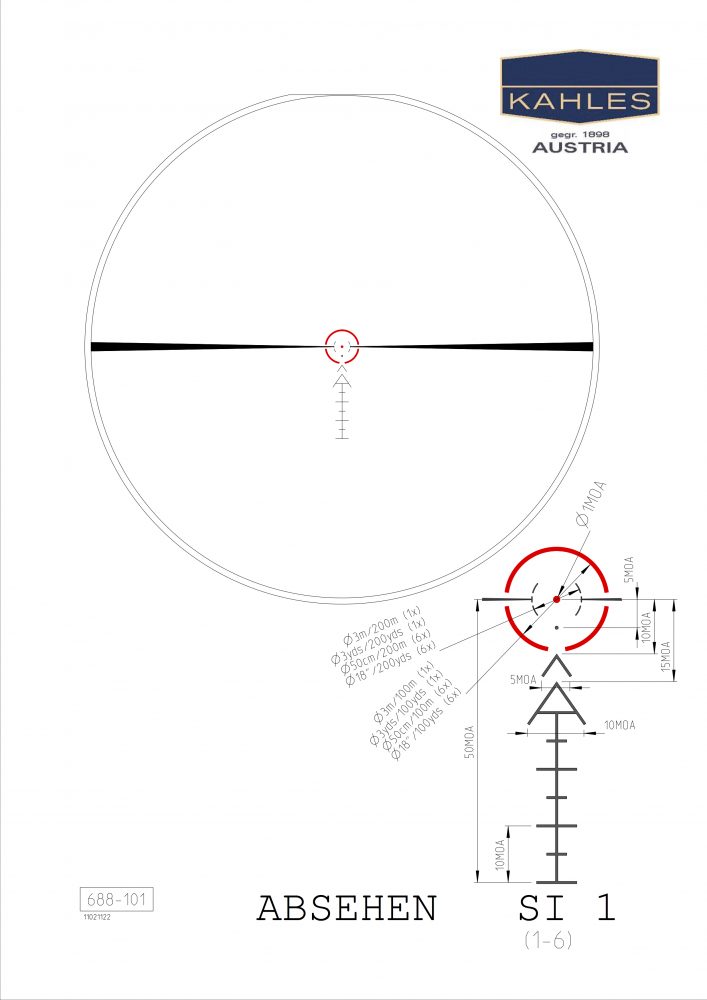
DUST IN THE WIND
As luck would have it—my luck, anyway—as I started to shoot the 240-grain loads, the wind began blowing left to right at around 15mph, with swirling gusts up to 35mph. Even with that, the 240-grain loads showed good potential accuracy, with groups averaging around two to three inches.
While taking a short break, a dust devil came along and covered the Mk4 and four C Products magazines that were lying on my shooting mat (actually a three- by five-foot carpet remnant) with fine dust and sand. Hey, when life gives you lemons…
When the wind died down, I could feel the grit as I fully loaded the C Products mags. Turning on the red illuminated reticle of the K16i, I performed some shooting on the move drills from 50 to seven yards. Despite the grit, the C Products Defense mags ran like a freight train.
At around 150 rounds, the front cross bolt that holds the KeyMod rail to the barrel nut worked loose from recoil and fell out. Curious, I ran another magazine through the gun with no problems. The bolt was replaced and torqued in place and the evaluation continued.
I had not lubricated the carbine before starting the T&E, but did so after I replaced the cross bolt. Between the lube and perhaps the carbine breaking in or both, the heavy Double Tap loads began to cycle normally.
SUMMARY
In total I put just over 400 rounds through the CMMG Mk4 with zero malfunctions, except those noted early on with the Double Tap 240-grain load. Those would have not occurred if I had been using a suppressor.
While the .300 BLK has more energy at medium ranges, I’m not convinced it will do anything my 5.56 carbines can’t do. Still, it offers an option, and options are always good.
And now that I have a fair supply of .300 BLK empty cases—and if the paperwork on my .30-caliber suppressor ever goes through—I have a great excuse to order just a .300 BLK upper from CMMG and complete one of the lower receivers that has been languishing in my safe.
SOURCES:
CMMG
(660) 248-2293
www.cmmginc.com
Black Hills Ammunition
(605) 348-5150
www.black-hills.com
C Products Defense
(941) 727-0009
www.cpdmags.com
Double Tap Ammunition
(866) 357-10MM
www.doubletapammo.com
Elzetta Design, LLC
(859) 707-7471
www.elzetta.com
Kahles/HPS Optics
(866) 606-8779
www.kahles.at/usa
Streamlight, Inc.
(800) 523-7488
www.streamlight.com

